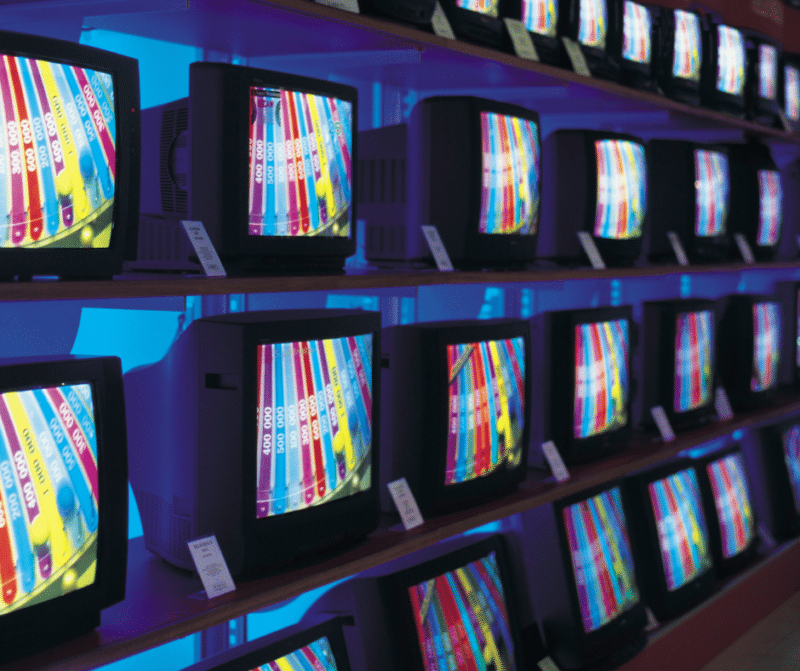Television is a form of connection for billions of people around the world. Whether it gives us entertainment, access to news, or any other information and access; we can all agree that TV has altered our lives somehow. But it’s been around since the 1900s with the invention of the first television, which means that there have definitely been some changes over the decades since TV first debuted as an invention and later as a household commodity.
There are a few main factors in how television has changed over the years. Those being how TVs developed, cable TV, improvements to video creation and upload, and changes in television content. With that in mind, here are some interesting tidbits about how TV has changed throughout the decades.

The Invention Itself
Ideas surrounding the creation of our modern television were written as early as the late 1800s. Important inventions like the cathode ray tube in 1897 and the scanning disk in the 1880s made this possible to try. The first experiment in TV creation was in 1907, and by 1926 the world was able to see a mechanical television. These sold over 10,000 sets, but had many limitations and scientists and inventors turned towards electronic television. Both coexisted in homes until the superior quality of electronic TVs took over. Since then, the original concept has been modified and improved often to advance picture quality, features, and more. The biggest part of this invention and popularity was colored television, which came around fully in the early 1970s.
Broadcasts
Broadcasting began steadily in the 1920s, mainly used for showing important news or government messages to the public until the Federal Broadcast System started using an experimental broadcast station to put photos of popular films onto televisions at home. The late 1930s brought NBC, which meant regular showings of things like locally broadcasting the New York World’s Fair. Over time it became more varied like important news, local broadcasts, and later on shows and films for families to enjoy. It became a way for American families to know about what’s going on in their area as well as for widespread knowledge, sympathy with unfortunate events, and more.
Pricing
Early television took a while to take off because of the onset of World War II. Before WWII, TVs were incredibly expensive for most families and only a handful of privileged individuals or households could afford them. There were also few regular showings and broadcasts. During the war, televisions were put on the back burner in the minds of the people and many sets went unsold and into storage. After WWII was when TVs were able to start to come back into action and stations like NBC began to bring popularity back to the forefront for television. Nowadays, improved materials and quality has made it possible for TVs to be more commonly made and sold which can lower the price some compared to current incomes of households.
Shows
Shows and broadcasts on TV have grown greatly over time. It started with just local events and news being shown to a handful of televisions in the area, but grew into more interesting content and ideas over time. NBC began to feature important news, magazine-type shows, and more over time. News was a big draw-in for people to purchase TV sets in the late 1900s and early 2000s. Sitcoms took the TV world by storm as well in this time, giving hardworking Americans a way to enjoy themselves and relax at home with TV. Now we can see almost anything on TV, from sitcoms to kids shows to movies to news and more.
Cable and More
Cable television is a whole different story for another day, it has its own inventions, improvements, and changes over time. But the invention and improvement of cable television from early broadcasting capabilities is quite a big factor in how we can enjoy TV now. And companies like Netflix have also opened up the world to more ways to enjoy television without cable, which now has led to streaming services of all kinds getting used in households around America and across the world.

Learning something new about the history and adaptation of what most of us use at least sometimes nowadays can be great for your own enrichment or for anyone that loves learning about history, inventions, and development. Since so many factors are at play when discussing television and how the commodity has become more widespread or better made over time, this list isn’t even half of what you could learn about the change of TV across many decades of time. But it does give you something nice to think about the next time you watch or turn on your television at home. Whether you use TV for cable, as a screen for gaming or computer use, or something else; we’ve all benefitted quite greatly from these interesting developments over time.
